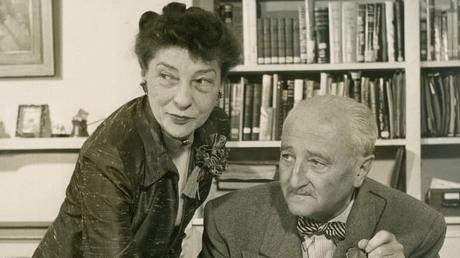In March 1942, an American code breaker named Elizebeth Smith Friedman made a gruesome discovery: Nazi spies in Latin America had located a large Allied supply ship named the along the coast of Brazil, and German submarines planned to sink it. Adolf Hitler therefore intended to destroy the ship he had offered $ 250,000 to any captain who could abduct it. Friedman's discovery enabled the Queen mary to escape the submarines, saving the lives of more than 8,000 soldiers on board.
READ MORE: When computer coding was a 'woman's' jobFriedman was one of America's first cryptanalysts, and she was instrumental in breaking down Nazi spy networks in Latin America during World War II. Yet, due to the sensitive nature of her work, she was not allowed to publicly reveal her wartime service. Friedman kept his work a secret until his death in 1980, even as J. Edgar Hoover took credit for his team's accomplishments by attributing his work to the FBI. It was only after his death that historians and researchers discovered his wartime contributions.

Penn State / Flickr Creative Commons / CC BY-NC-ND 2.0
Friedman begins his career researching Shakespeare codes
Elizebeth Smith was born in Huntington, Indiana in 1892. She began her career in cryptanalysis in 1916, when a wealthy man named Colonel George Fabyan hired her to work at Riverbank Laboratories, which he had founded a few years ago. previously in Illinois. Fabyan was a conspiracy theorist who believed that Sir Francis Bacon was the true author of William Shakespeare's plays and poems. Elizebeth's job was to examine Shakespeare's work for secret messages that Fabyan believed Bacon had included in the plays and poems.
It was at Riverbank that Elizebeth met her husband, William Frederick Friedman, whom she married in 1917. Elizebeth and William both realized while working for Fabyan that Baconian theory, as it is called, was not everything. simply not true (the couple then debunked the theory in their 1957 book, Shakespearean figures examined). But soon they had the chance to use their coding skills in a different way, when the United States entered World War I and asked Riverbank Laboratories for wartime assistance.
The Friedmans led an unofficial code-breaking team during World War I, and in 1921 they moved to Washington, DC to work for the War Department. A few years later, Elizebeth began working with the Coast Guard Hack Codes that helped identify and prosecute smugglers during Prohibition. For this work, she created a code decryption unit, becoming the first woman to lead a code decryption team in the U.S. government.
Then came World War II. The Coast Guard moved from the Treasury to the Department of the Navy, which did not allow women to lead units; and suddenly Friedman found herself working for a new male boss and on projects that she didn't always think were the most suited to her skills. Despite this, she managed to make significant contributions to the war effort through her meticulous coding.
Friedman identifies Nazi spy ringleader
Friedman did not choose to work on Nazi spy rings in Latin America, says Amy Butler Greenfield, historian and author of upcoming book The Woman All Spies Fear: Code Breaker Elizebeth Smith Friedman and her Hidden Life.
"She's not really happy with this assignment," says Greenfield. "She later said that she did not feel well deployed during the war."
From what Greenfield can tell, Friedman felt this because she was used to breaking extremely complex codes. Although the Japanese and German central governments used complex codes during the war, the codes used by Nazi spies in Latin America were much simpler, and Friedman seemed to think she would have been more useful by taking more complex codes.
Despite Friedman's feeling that she was qualified for greater challenges, she still made important contributions to the Allied war effort.
"Elizebeth knew well the value of what she did," says Melissa Davis, director of library and archives at the George C. Marshall Foundation, which houses the Elizebeth Smith Friedman collection.
"[Nazi] the spies would broadcast radios when the troop transports left the United States full of thousands of troops, and this information was going to be passed on, in particular, to the submarines which could then intercept and sink the troop ships, "says Davis. "So I knew she was saving thousands of lives."
One of the main Nazi spies identified and tracked by Friedman was Johannes Siegfried Becker, codenamed "Sargo", who was trying to forge an alliance between Germany and Argentina.
"It was Elizebeth who, as far as I know after reviewing all the records, is the one who first made up the name of the ship it is on," says Greenfield. "This ship is stopped, and this spy is kidnapped and brought to London and [he] confess everything, and give a huge amount of information about spy rings. And that's part of what leads to shaking spy rings and crushing them.

WATCH: America the Story of Us: World War II on HISTORY Vault
Friedman IDs Spy Fronting as a Doll Shop Owner
Another WWII spy whose codes Friedman examined was Velvalee Dickinson, a white American who owned a doll store in New York City and sent coded messages for the Japanese government. FBI Director J. Edgar Hoover used Dickinson's arrest and trial to draw attention to his office, but did not mention Friedman reviewed Dickinson's coded letters for the prosecution and he offered a glimpse of what they meant.
Although Elizebeth and her husband William both performed confidential coding during the war, William ended up receiving more public credit for his work, in part because he had to testify during an investigation for whether the United States had prior knowledge of the Japanese attack on Pearl Harbor. Recent studies have addressed this imbalance by spotlighting Elizebeth Smith Friedman, along with other women who received little credit for cracking codes during WWII.
